New Frontiers Initiative (NFI) and Blue Waters (BW) Graduate Fellowship Programs
| 2014-2015 Blue Waters Graduate FellowsTen outstanding computational science PhD students from across the country have been selected to receive the 2014-2015 Blue Waters Graduate Fellowships, which provide graduate students in diverse fields with substantial support and the opportunity to leverage the petascale power of NCSA's Blue Waters supercomputer to advance their research. Over three years this fellowship program will award more than $1 million and nearly 30 million integer-core hours to support graduate research. The 2014-2015 fellows are:
|
Skip to Content


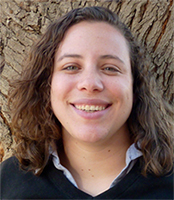 Kenza Arraki, New Mexico State University, is studying how galaxies change throughout cosmic time. Her research is focused on understanding how baryonic physics impacts the formation and evolution of dwarf galaxies. Observations and numerical simulations continue to produce different results on the abundance, structural properties, and stellar mass assembly history of dwarf galaxies. Kenza uses the hydrodynamical Adaptive Refinement Tree code (hydroART) to investigate how updated models for star formation and stellar feedback change the evolving properties of dwarf galaxies. During her fellowship, she will produce a large sample of high-resolution dwarf galaxies in a cosmological context. Using these simulated dwarf galaxies, Kenza will compare their structural, stellar, and gaseous properties to those of observed galaxies. This will enable the astronomical community to better understand which physical processes are the dominant components driving dwarf galaxy evolution.
Kenza Arraki, New Mexico State University, is studying how galaxies change throughout cosmic time. Her research is focused on understanding how baryonic physics impacts the formation and evolution of dwarf galaxies. Observations and numerical simulations continue to produce different results on the abundance, structural properties, and stellar mass assembly history of dwarf galaxies. Kenza uses the hydrodynamical Adaptive Refinement Tree code (hydroART) to investigate how updated models for star formation and stellar feedback change the evolving properties of dwarf galaxies. During her fellowship, she will produce a large sample of high-resolution dwarf galaxies in a cosmological context. Using these simulated dwarf galaxies, Kenza will compare their structural, stellar, and gaseous properties to those of observed galaxies. This will enable the astronomical community to better understand which physical processes are the dominant components driving dwarf galaxy evolution. Matthew Bedford, University of Alabama, Huntsville. Bedford plans to implement a new numerical model for partially ionized plasmas in which the core solar wind and pickup ions (PUIs) are treated separately. The model will be used to analyze plasma and magnetic field behavior in the heliosphere.
Matthew Bedford, University of Alabama, Huntsville. Bedford plans to implement a new numerical model for partially ionized plasmas in which the core solar wind and pickup ions (PUIs) are treated separately. The model will be used to analyze plasma and magnetic field behavior in the heliosphere.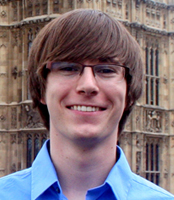 Jon Calhoun, University of Illinois at Urbana-Champaign, researches fault tolerance issues related to high-performance computing systems. In particular, he is interested in silent data corruptions and their impacts on HPC applications and runtimes. To this end, he has created an LLVM fault injection framework that he uses to simulate silent data corruptions. Currently, he is investigating impacts of silent data corruption on the linear solver algebraic multigrid and developing low-cost detection schemes and recovery schemes.
Jon Calhoun, University of Illinois at Urbana-Champaign, researches fault tolerance issues related to high-performance computing systems. In particular, he is interested in silent data corruptions and their impacts on HPC applications and runtimes. To this end, he has created an LLVM fault injection framework that he uses to simulate silent data corruptions. Currently, he is investigating impacts of silent data corruption on the linear solver algebraic multigrid and developing low-cost detection schemes and recovery schemes.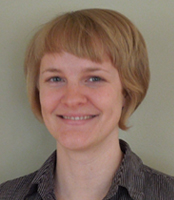 Alexandra Jones, University of Illinois at Urbana-Champaign. One of the most important roles clouds play in the atmosphere is in redistributing radiative energy from the sun and that is emitted from the Earth and atmosphere. However, radiative transfer is generally modeled crudely because of the perceived computational expense. Jones will use an enhanced version of the I3RC community 3D Monte Carlo Radiative Transfer model to produce benchmark simulations of 3D radiative with unrivaled accuracy.
Alexandra Jones, University of Illinois at Urbana-Champaign. One of the most important roles clouds play in the atmosphere is in redistributing radiative energy from the sun and that is emitted from the Earth and atmosphere. However, radiative transfer is generally modeled crudely because of the perceived computational expense. Jones will use an enhanced version of the I3RC community 3D Monte Carlo Radiative Transfer model to produce benchmark simulations of 3D radiative with unrivaled accuracy. 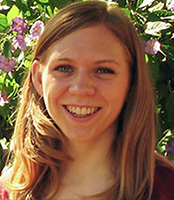 Sara Kokkila, Stanford University, will combine chemistry, mathematics, and high-performance computing to study the chemical properties of greenhouse gases. The photoisomerization of photoactive yellow protein (PYP) has become one of the primary models for studying photoreceptor proteins. Quantum mechanical properties, such as the absorption of visible light, can be obtained from computationally demanding electronic structure methods. The research group Kokkila is a member of recently developed the tensor hypercontraction (THC) approach to lower the computational scaling of electronic structure methods. She has used heterogeneous programming techniques and applied the THC approach to develop an efficient and accurate method for excited state calculations and plans to implement a massively parallel and fault tolerant version of this code. Using the computational resources of Blue Waters in conjunction with this program, it will be possible to study the excited states of both PYP and the PYP photocycle intermediates with unprecedented accuracy.
Sara Kokkila, Stanford University, will combine chemistry, mathematics, and high-performance computing to study the chemical properties of greenhouse gases. The photoisomerization of photoactive yellow protein (PYP) has become one of the primary models for studying photoreceptor proteins. Quantum mechanical properties, such as the absorption of visible light, can be obtained from computationally demanding electronic structure methods. The research group Kokkila is a member of recently developed the tensor hypercontraction (THC) approach to lower the computational scaling of electronic structure methods. She has used heterogeneous programming techniques and applied the THC approach to develop an efficient and accurate method for excited state calculations and plans to implement a massively parallel and fault tolerant version of this code. Using the computational resources of Blue Waters in conjunction with this program, it will be possible to study the excited states of both PYP and the PYP photocycle intermediates with unprecedented accuracy.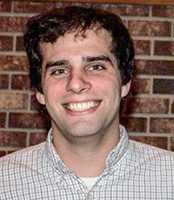 Edwin Mathews, University of Notre Dame, focuses on using high-fidelity computational fluid dynamics methods to improve predictive capabilities for optical distortions caused by compressible turbulent flows, or aero-optics. During his fellowship, he plans to use the Blue Waters system to run some of the most accurate and comprehensive computational aero-optics simulations to date. Beyond flow computation, he plans to use the unique capabilities of Blue Waters to develop a highly parallelized set of tools for data analysis, statistical exploration, and visualization of turbulent flow and optical field data. Through systematic analysis using these tools, the results can then be used to guide the design of effective flow-control strategies to mitigate aero-optical aberrations in airborne optical platforms.
Edwin Mathews, University of Notre Dame, focuses on using high-fidelity computational fluid dynamics methods to improve predictive capabilities for optical distortions caused by compressible turbulent flows, or aero-optics. During his fellowship, he plans to use the Blue Waters system to run some of the most accurate and comprehensive computational aero-optics simulations to date. Beyond flow computation, he plans to use the unique capabilities of Blue Waters to develop a highly parallelized set of tools for data analysis, statistical exploration, and visualization of turbulent flow and optical field data. Through systematic analysis using these tools, the results can then be used to guide the design of effective flow-control strategies to mitigate aero-optical aberrations in airborne optical platforms.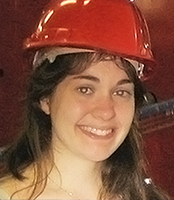 Ariana Minot, Harvard University, will study the implementation of a GPU-accelerated particle filter algorithm and the potential of more general sequential Monte Carlo methods to better understand the behavior of the electric power grid under a high penetration of renewable energy sources and distributed smart loads. Advances in simulation and mathematical modeling for dynamic, stochastic systems are needed in order to better understand the behavior of the electric power grid under a high penetration of renewable energy sources and distributed smart loads. One key aspect of reliable power system operation is state estimation, which keeps track of the state of the grid by estimating the voltage magnitudes and phase angles at each bus. With the advent of phasor measurement units (PMUs), real-time measurements of electric waves at various locations on the grid using GPS satellite-synchronized clocks are available. Introducing PMUs leads to both an increase in the dimension of the data and in the sampling rate that will require using HPC resources. Parallelization of the matrix operations and numerical integration at the core of the state estimation problem must be studied. Recent work on dynamic state estimation shows promising results using particle filters to estimate dynamic state variables, such as the generator rotor angle and speed. Particle filters are a type of sequential Monte Carlo method that replace distributions by weighted samples. This allows for studying non-linear systems with non-Gaussian noise but comes at a higher computational cost. Minot is interested in studying the implementation of a GPU-accelerated particle filter algorithm for simulation of a large-scale power system in real-time using Blue Waters.
Ariana Minot, Harvard University, will study the implementation of a GPU-accelerated particle filter algorithm and the potential of more general sequential Monte Carlo methods to better understand the behavior of the electric power grid under a high penetration of renewable energy sources and distributed smart loads. Advances in simulation and mathematical modeling for dynamic, stochastic systems are needed in order to better understand the behavior of the electric power grid under a high penetration of renewable energy sources and distributed smart loads. One key aspect of reliable power system operation is state estimation, which keeps track of the state of the grid by estimating the voltage magnitudes and phase angles at each bus. With the advent of phasor measurement units (PMUs), real-time measurements of electric waves at various locations on the grid using GPS satellite-synchronized clocks are available. Introducing PMUs leads to both an increase in the dimension of the data and in the sampling rate that will require using HPC resources. Parallelization of the matrix operations and numerical integration at the core of the state estimation problem must be studied. Recent work on dynamic state estimation shows promising results using particle filters to estimate dynamic state variables, such as the generator rotor angle and speed. Particle filters are a type of sequential Monte Carlo method that replace distributions by weighted samples. This allows for studying non-linear systems with non-Gaussian noise but comes at a higher computational cost. Minot is interested in studying the implementation of a GPU-accelerated particle filter algorithm for simulation of a large-scale power system in real-time using Blue Waters. George Slota, Penn State University. Slota plans to use Blue Waters to investigate how best to use highly parallel heterogeneous CPU-GPU systems to accelerate graph analytic algorithms, such as those that find frequently occurring substructures or latent relationships within graphical data. Through the development of techniques to tackle these problems, he hopes that it will be possible to analyze massive graphs with billions of vertices and edges.
George Slota, Penn State University. Slota plans to use Blue Waters to investigate how best to use highly parallel heterogeneous CPU-GPU systems to accelerate graph analytic algorithms, such as those that find frequently occurring substructures or latent relationships within graphical data. Through the development of techniques to tackle these problems, he hopes that it will be possible to analyze massive graphs with billions of vertices and edges. 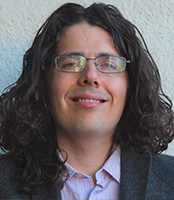 Derek Vigil-Fowler, University of California, Berkeley, will add a layer of parallelism to the calculation of the dielectric matrix (DM) and the inverse dielectric matrix (IDM) to remove bottlenecks in calculations for large and complex systems. The calculation of band gaps and other excited-state properties of materials of fundamental and technological interest requires calculating the dielectric matrix (DM) of the system and inverting it to give the inverse dielectric matrix (IDM). These matrices are frequency dependent, scale with system size, and are in general quite large, especially for many systems of increasing interest, e.g. reduced-dimensional systems. Currently the BerkeleyGW (BGW) code, is very well parallelized for calculating the DM, scaling up to tens of thousands of processors. However, for the matrix inversion BGW currently uses ScaLAPACK, which scales to roughly 50 processors. This results in wasted computational resources, as the additional processors past 50 used for the calculation of the DM give no benefit for the matrix inversion. To solve this problem, Vigil-Fowler will exploit the frequency dependence of the DM to add a layer of parallelism to the calculation of the DM/IDM. BGW currently calculates the DM/IDM one frequency at a time, while the algorithm he will implement instead calculates multiple frequencies at once. Since DMs at multiple frequencies will be inverted to yield IDMs this will relieve the ScaLAPACK bottleneck. This will allow BGW to scale up to larger systems and will allow researchers to study all types of systems with much improved computational efficiency and speed.
Derek Vigil-Fowler, University of California, Berkeley, will add a layer of parallelism to the calculation of the dielectric matrix (DM) and the inverse dielectric matrix (IDM) to remove bottlenecks in calculations for large and complex systems. The calculation of band gaps and other excited-state properties of materials of fundamental and technological interest requires calculating the dielectric matrix (DM) of the system and inverting it to give the inverse dielectric matrix (IDM). These matrices are frequency dependent, scale with system size, and are in general quite large, especially for many systems of increasing interest, e.g. reduced-dimensional systems. Currently the BerkeleyGW (BGW) code, is very well parallelized for calculating the DM, scaling up to tens of thousands of processors. However, for the matrix inversion BGW currently uses ScaLAPACK, which scales to roughly 50 processors. This results in wasted computational resources, as the additional processors past 50 used for the calculation of the DM give no benefit for the matrix inversion. To solve this problem, Vigil-Fowler will exploit the frequency dependence of the DM to add a layer of parallelism to the calculation of the DM/IDM. BGW currently calculates the DM/IDM one frequency at a time, while the algorithm he will implement instead calculates multiple frequencies at once. Since DMs at multiple frequencies will be inverted to yield IDMs this will relieve the ScaLAPACK bottleneck. This will allow BGW to scale up to larger systems and will allow researchers to study all types of systems with much improved computational efficiency and speed.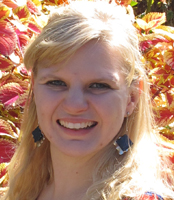 Varvara Zemskova, University of North Carolina at Chapel Hill. The Meridional Overturning Circulation (MOC) distributes heat and nutrients crucial to biological activity throughout the global ocean, and it is important to understand its mechanism and sensitivities to changing global conditions. Zemskova’s research focuses on understanding the energetics of the MOC. Previously she applied a framework for calculating various terms in the ocean energy cycle to observational data and the general circulation model. Using Blue Waters, she will apply the same framework to horizontal convection, fluid flow forced by differential surface buoyancy forcing that often is studied as a simplified model of the MOC.
Varvara Zemskova, University of North Carolina at Chapel Hill. The Meridional Overturning Circulation (MOC) distributes heat and nutrients crucial to biological activity throughout the global ocean, and it is important to understand its mechanism and sensitivities to changing global conditions. Zemskova’s research focuses on understanding the energetics of the MOC. Previously she applied a framework for calculating various terms in the ocean energy cycle to observational data and the general circulation model. Using Blue Waters, she will apply the same framework to horizontal convection, fluid flow forced by differential surface buoyancy forcing that often is studied as a simplified model of the MOC.